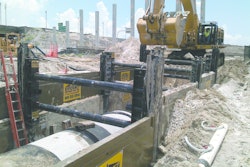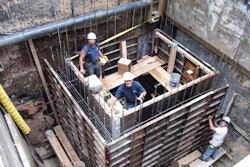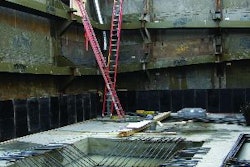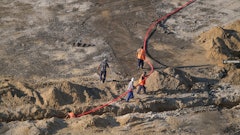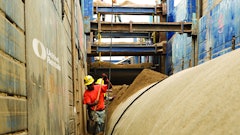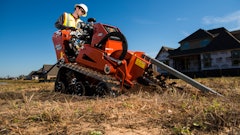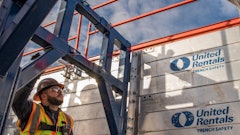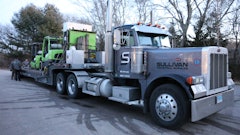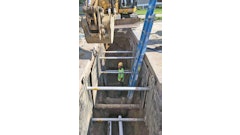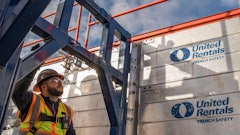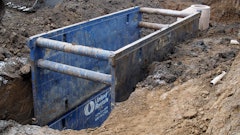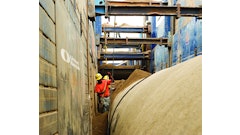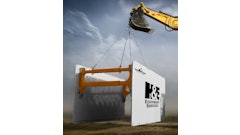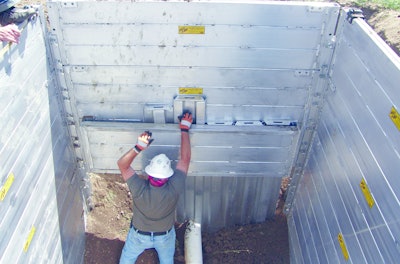
Excavation projects by definition are dangerous operations that require caution and planning, especially when the excavation is intended to create a work space for personnel such as for underground installation repair or installation. Creating a safe working area for every excavation project presents unique challenges for the contractor or municipality’s safety personnel and the work crew.
Many underground utility contractors own some type of trench protection device such as steel trench shields or perhaps aluminum hydraulic shores. Municipality DPWs frequently own aluminum trench shields that can be moved with a rubber-tire backhoe. However, it is not practical or even responsible for the contractor or municipality to assume their own shoring or shielding equipment can be safely used for every excavation situation or site condition they encounter. As a result, they often need to rent specific equipment for the job. That's where you come in.
Excavation parameters vary greatly from project to project; including soil type, adjacent structures or buildings, and the ever present existing underground utilities that need to be located, marked, and factored into the choice of trench protection system or device. When contractors and municipalities face excavation challenges that are beyond the capabilities of their own fleet trench safety equipment, they must rely on rental equipment to fill in the gaps. Experienced shoring specialists should be able to solve any excavation and safety conflicts by addressing issues encountered on the jobsite; and it is never a one-size-fits-all solution.
To properly serve your customers' trench shoring needs, you must obtain as much information as possible from the contractor or municipality’s designated safety official or engineering team before proposing a shoring system. The following are some important points to consider when designing a safe and appropriate shoring system for a particular excavation project
Is this a shielding or shoring situation?
Although commonly used synonymously, shielding and shoring are two separate protective systems with their own rules regarding proper use within OSHA standards. Shielding is a protective system utilizing a trench shield or “trench box” installed in the excavation to protect (shield) the workers from the hazards of a cave-in. Shoring is a protective system that utilizes structural members or hydraulic pressure that prevents the trench walls from caving in. An experienced shoring specialist can help choose the method best suited for the situation.
What is the work to be performed in the excavation and what is the proposed size and depth?
The shoring specialist has many options available from the manufacturer and the size and depth of the excavation will determine the best option to choose. Official manufacturer-authorized equipment distributors offer equipment for small and shallow excavations, long pipe runs, crossing utilities, limited access, and extreme depths to name a few excavation challenges. Rental companies with a close association with the manufacturer’s team of engineers will have access to a solution to almost any problem encountered.
What size excavation equipment is available?
When renting underground protection and production products, it is critical to factor in the size and capacity of the excavation and earth moving equipment that will be used on the project. To minimize costs to the customer, an experienced shoring specialist will match the shielding or shoring system to the heavy equipment that will be used to install the shoring system.
The equipment distributor should be able to provide trench safety equipment that corresponds with the excavator and other heavy machines commonly used for different excavation operations. For example, a modular aluminum shielding system such as Build-A-Box is light enough for installation and extraction using a tractor backhoe. Comparatively, a steel trench shield 28 feet long rated for an excavation up to 30 feet deep weighs over 15,000 pounds, but well within the capacity of a typical sized track excavator that a contractor may already have in their fleet, thus eliminating the need to rent “big iron” in addition to the shoring system.
Are there any overhead utilities or other obstructions?
The proposed shoring or shielding equipment should address all concerns of the project including overhead obstructions. In most cases, options are available to utilize different rigging options to stay within OSHA standards regarding safe distances from overhead power lines and such. The system should be designed to provide for safe working distance from overhead hazards during assembly, installation, and removal of the shoring system.
Are there any buried utilities within excavation limits that need to be accommodated?
Dealing with utilities crossing or running parallel to the proposed excavation can cause costly delays and repairs if not addressed properly. These utilities can also create a long and frustrating day for the foreman and the contractor-designated safety person (referred to as the “competent person” on excavation projects). Some systems such as vertical hydraulic shoring are designed to install so crossing utilities pass through the trench with relative ease.
For larger and deeper projects with crossing utilities, a sheeting frame system such as Shore-Trak is an efficient and cost-effective solution. Sheeting frame systems cantilever corrugated steel sheets below a waler frame, providing better visibility during installation around existing utilities. Sheeting frames allowing efficient installation with the excavator, thus eliminating the need for a sheeting driver.
What are the limitations of the shoring or shielding equipment?
All manufactured shoring and shielding equipment has limitations for proper use. These limitations are found in the manufacturer’s tabulated data supplied with the system. Trench shields are constructed with a maximum allowable depth of use in different soil types consistent with OSHA classifications. Hydraulic shoring tabulated data provided by the manufacturer includes a chart specifying maximum cylinder spacing for different soil conditions.
Other systems available through a rental trench store such as Side Rail Systems and sheeting frames will include tabulated data for the proposed configuration. Most shoring and shielding manufactures will provide tabulated data stamped by a registered Professional Engineer. In some cases, a professional-engineered shoring system is required and the shoring specialist should be familiar with the restrictions and requirements dictated in the tabulated data.
These items address the most common difficulties encountered on most excavation projects and should be viewed as the minimum amount of information that needs to be collected before determining the proper and safe shoring solution. In any case, the contractor or municipality should provide as much information to the shoring specialist as possible when renting trench safety equipment.
Remember, it is the mark of a well-trained shoring and shielding specialist to know the latest shoring products available, as well as the most efficient installation and removal techniques for all systems.

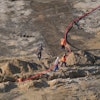
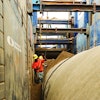
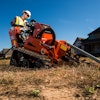
![[Video] Installing Hydraulic Shoring](https://img.forconstructionpros.com/files/base/acbm/fcp/image/2016/05/default.572b560a76f83.png?auto=format%2Ccompress&fit=crop&h=167&q=70&w=250)
